(round) brackets = Japanese-Okinawan pronunciations
|
These ideograms are written in Old Chinese Script - but pronounced using Japanese and Okinawan language. [square] brackets = Chinese pronunciations (round) brackets = Japanese-Okinawan pronunciations a) 補 (Ho) = [bu3] - increase, aid, repair, supplement, mend, compensate and nourish b) 助 (Jo) = [zhu4] - help, support, augment and assist c) 運 (Un) = [yun4] - transport, carry, utilise, revolve, buoyancy and fate d) 動 (Do) = [dong4] - move, act, alter, momentum and touch It seems that the four ideograms are deployed using two couplets: 1) 補助 (Hojo) = supplement and auxiliary [Buzhu] 2) 運動 (Undo) = sporting and competitive vigorous movement [Yundong] The following is a contemporary webpage from Taiwan (auto-translated into 'English' entitled '法規內容-教育部運動發展基金補助各級學校運動團隊作業要點') continuously uses the term '補助運動' (Hojo Undo - Buzhu Yundong) - which is used exclusively to refer to 'supplementary sporting exercises': The inclusion of the terms 'buoyancy', 'touch', 'transport', 'momentum' and 'fate' - all suggest an 'internal' management of the 'external' (physical) body (through the attainment of an 'effortless momentum'). Therefore, although this term is common-place in China - the mastery it refers to is certainly not common-place. On the one-hand, a man or woman might train to win a Gold Medal or World Title - but these achievements (as important as they are for the 'Nation') only fall inside the 'external' component of this term. On the other-hand, Karate-Do Styles such as Goju Ryu exemplify the principle of the 'internal' superseding the 'external' - even though a lifetime must be spent subsumed in the 'external' whilst attempting to understand this relationship and transition into the infinitely powerful 'internal' position. Of course, ultimately, both the 'external' and the 'internal' integrate into a perfect, functioning 'whole' - as can be seen during a perfect execution of a Kata.
0 Comments
Lu Zijian comes from a famous martial arts family situated in the Yichang area of Hubei province - a family which contains many long living members: Grandfather - Lu Zhengde [吕政德] (1840-1913) - 73-years-old Grandmother - Wu Meihua [吴梅花] (1842-1945) - 103-years-old Sister - Lu Zimei [吕紫梅] (1888-Still Alive) - currently 125-years-old! Brother-in-Law - Li Fengfang [李丰方] (1878-2001) - 123-years-old During his long life, Lu Zijian mastered all aspects of the 'Wudang' (武当) tradition (training for three generations - or sixty-years - under various Masters) - specialising in 'Longfist' (長拳 - Chang Quan) - and eventually inheriting the Wudang Bagua Zhang (八卦掌) lineage. In 1945, a US Military General took exception to Lu Zijian's good reputation (as he had killed both Japanese and Nationalist thugs over the years - many of the latter working for the US)! The General sent his personal Bodyguard - 'Tom Newham' - to teach Lu Zijian a lesson - but things did not go according to plan. The Americans had been making anti-Chinese statements and this fight took place in front of Chiang Kai-shek's mansion (situated at the foot of Huangshan Mountain) on the South Bank of Chongqing. Lu Zijian beat Tom Newham to death with a single palm strike as taught in the Baguazhang System. Chiang Kai-shek was furious about this (for political reasons) and announced that Lu Zijian was dismissed as his Bodyguard! Previously, Lu Zijian had been in trouble in 1929 when he openly opposed Chiang Kai-Shek's plan to 'ban' TCM and introduce a US-controlled medical insurance system in China!
The traditional purpose of Karate-Do is said to be the development of the ‘Single Punch Precise Kill’ (一拳必殺) technique! This is because the historical origins of Karate-Do developed out of battlefield martial arts - specifically designed to kill and wound an opponent without mercy! The question for modern practitioners is whether this objective is suitable as a contemporary teaching device – and how should the technical inadequacies of the old ways be improved upon? It may well be the case that the potentially lethal elements of Karate-Do are retained (because they are inherent in the ancient martial techniques) - but that the ‘killing’ aspect should not be made the key point when teaching the public – and should be replaced by encouraging young students to develop their own minds and bodies whilst perfecting a virtuous character! Therefore, saving lives and helping others signifies a necessary shift in traditional attitudes when teaching Karate-Do to modern students. In fact, this is not a ‘new’’ attitude that I invented – but an idea taught to me by my father Miyagi Chojun. In-turn, this was an attitude inherited from Higaonna Kanryo (and his Chinese teachers). Although exactly the same ‘killing’ techniques are retained (and certainly not ‘removed’ from the art) - what is emphasised is character development so that clever ways of resolving conflict in the environment is utilised as a type of ethereal Karate-Do – that precedes any need to deploy potentially devastating physical techniques! The lethal reality of Karate-Do techniques, therefore, is ‘hidden’ within a deep and stratified approach to Goju Ryu Karate-Do, which is now embedded in the grading system involving coloured belts. If the practitioner does not suitably develop their mind (psychology) and body (physicality) - then they do not gain access to the ‘lethal’ nature of the genuine Goju Ryu Karate-Do techniques! Each practitioner must develop ‘trustworthiness’ before they are permitted to gain access to the deepest aspects of this ancient martial art! My father – Miyagi Chojun – maintained the emphasis of the ‘Hard’ (Go) aspect of Goju Ryu through the ‘Sanchin’ Kata which had been passed on to him by Higaonna Kanryo – but he felt the opposite element of ‘giving way’ was missing in the Style, or at least not very well represented. To remedy this, Miyagi Chojun developed the ‘Tensho’ Kata from a set of movements he had been taught in China from a White Crane Fist teacher in Fuzhou related in lineage to the Chinese teacher of Higaonna Kanryo. Bear in mind that ‘Tensho’ is NOT exactly the same as the Form (六機手 - Ro Ku ki Te) he learned in China and that Miyagi Chojun chose to modify its structure to assist the ‘balance’ of Goju Ryu Karate-Do methodology. This is where Miyagi Chojun developed the ‘Soft’ element of Goju Ryu which saw the Tensho Kata counter-balance the Sanchin Kata. When practiced together – the Yin (Soft) and Yang (Hard) energy within the mind and body is perfectly ‘balanced’! ‘Weaving Hand’ (機手 - Ki Te) is a principle found within the ‘Southern Fist’ martial system of China, and which relates to all the upper body movement of the extremities and the combat techniques which are expressed therein. Within the book entitled ‘Bubishi’ (武備志) (transmitted China to Okinawa) - there is an explanation of where the vital pressure points (経穴 - Kei Ketsu) are on the opponent’s body – and how the hand – used in the ‘open palm’ (開掌 - Hiraki Tenohira) position – can be used to ‘pierce’ these points and cause catastrophic damage to the opponent’s health! Higaonna Kanryo taught Miyagi Chojun how to ‘stand’ and ‘move’ through the ‘Sanchin’ Kata – and then Miyagi Chojun then developed ‘Tensho’ Kata to emphasis ‘Softness’ - but a ‘Softness’ with a lethal ‘hidden’ central element (involving pressure-point hitting)! The ‘Sanchin’ and ‘Tensho’ Katas are unique to Goju Ryu Karate-Do and are not found within ‘Shuri-Te’ (首里手) derived-traditions! These are foundational Katas that are taught to express the beginning and the end of the Goju Ryu Karate-Do training method! As this is the case, there are definite ‘breathing’ methods used when performing these Katas. The ‘Sanchin’ Kata employs what is referred to as a formalised ‘Yang Breath’ (陽の息吹 - Yō No Ibu Ki) - which sees the practitioner maintaining the ‘tightening’ of all the muscles around the bones throughout the entirety of the body – with the instructor continuously ‘testing’ to ensure this process is being adhered to correctly! Through these training methods, the practitioner learns how to shift and lower the centre of gravity, how to smoothly transition between various and different fighting techniques - all performed whilst breathing deeply and fully! Both myself and my father, however, teach preparation exercises which loosen and strengthen the body and focus the mind BEFORE any of these profound exercises are taught. This is important as students require a means of ‘entering’ the Style so that the Goju Ryu techniques are not experienced as a shock to the system. Correct preparation prevents unnecessary injury and conditions the mind and body so that the structures and processes become suitable for further and advanced training. This is the systematic application of the scientific process. Science does not stand still but provides opportunities for continuous and further development. Logic and reason must be brought to bear upon the established traditions using the old techniques and is immeasurable when providing a firm and dynamic foundation for further development! When I was young, Kano Jagoro (嘉納冶五郎) visited Okinawa (in 1927) and was very impressed in the rational approach that my father had incorporated into the structure of Higaonna Naha-Te (as it transitioned into Goju Ryu)! He even took elements of my father's training regimes and incorporated them into his ‘Judo’ training patterns! He agreed that logic and reason must be used within traditional martial arts as a means to ensure that these old ways are preserved and made relevant for survival within modern society! My father explained to Kano Jagoro that the structure of Karate-Do is similar to the physical structures of material objects – such as a house, a tower or a bridge, etc. If the design principles are not sound – the building and/or structure will not stand – and will not be able to fulfil the purpose for which it was made! The house will collapse, the tower will fall, and the bridge will give way! Kano Jagoro was impressed with this thinking and congratulated my father on his progressive attitude! Indeed, Kano Jagoro incorporated this type of thinking into his development of Judo technique! As for my father – Miyagi Chojun – he would later develop the ‘Gekisai’ (撃砕) Kata (Number One and Number Two), as a means to express the entire Goju Ryu Karate-Do path in just two short sets of movements which can be elaborated extensively when an instructor so chooses to do so! This was a substantial achievement which many other lineages of Goju Ryu misinterpret as being ‘simplistic’ or ‘beginning’ only Kata – but in reality, my father intended these Katas to be something much more important than this. If the ‘Gekisai’ Kata are closely examined, a whole new world of ‘meaning’ can be clearly discerned! This does not detract from the fact that the entirety of Goju Ryu Karate-Do is defined by the ‘Sanchin’ and the ‘Tensho’ Kata! When added together – there are ‘twelve’ (12) Kata preserved within Goju Ryu Karate-Do. The two ‘Gekisai’ are known as the ‘public’ Kata which are used to prepare a student for a more profound learning experience later on! Miyagi Chojun had a deep knowledge of geography and history as well as the Chinese Classics and was well versed in the different aspects of Eastern culture. I will never forget the image of my teacher - who used a dictionary as a pillow and would constantly look-up the meaning of words and think deeply about what he found! He was particularly knowledgeable about medicines and the physiology of the human body, and always studied Karate-Do from a medical point of view. This is why many of his acquaintances were also doctors. He studied Karate-Do from a modern and scientific point of view and designed its structure as a practical system! Indeed, modern Goju Ryu Karate-Do is designed around a scientific agenda which brings logic and reason to the practice of an ancient martial art! Although the techniques can be lethal if deployed a certain way – Miyagi Chojun ensured that the health-giving component of each technique was emphasised over its destructive element. An emphasis upon building a sound mind and a strong body replaced the destructive act of confusing the mind and harming the body of an opponent! Goju Ryu Karate-Do was maintained as a traditional fighting method with modern (medical) implications! 科学的空手道へ指導体系を確立 在来の空手道は、一拳必殺といわれるように、もっぱら実戦の場での殺傷の武術として発達してきたもので、術技のうえでも、現在の教育的見地からみれば、不適当な点もあった。 このため宮城長順は基本形―剛の形(サンチン=三戦)のほかに、「六機手」というものを研究して柔の形(テンショウ=転掌)をつくった。「機手」とは中国南拳の上肢の動作および技法のことを言い、沖縄に伝わった『武備志』のなかで相手の急所(経穴)を突く際の手(開掌)の使い方が述べられている。宮城長順はこの手法を研究し、鍛錬形としてテンショウを創始した。また、東恩納寛量から鍛えられたサンチンの立ち方と運歩法をはっきりと定義づけたのである。 サンチン、テンショウは首里手派にはなく、剛柔流空手道独自のものである。この基本形の鍛錬法においては、気息の呑吐法(陽の息吹)という形式化された独特な呼吸法があり、指導者による筋骨の締め方を伴う鍛錬法がある。こうした鍛錬法を通じて、「術技の変化」「気息の呑吐」「重心の移動」を体得するのである。 さらに宮城長順の創始したものとして、基本形・開手形に入る前に行う徒手体操式の空手道術技に関連した「予備運動法」と、柔軟で強力な体力を養成しながら空手道術技の上達を側面的。 に援助する補助運動法がある。この予備運動は修練上、非常に合理的な運動法であり、その重要性は計り知れないものがある。講道館柔道の創始者嘉納冶五郎が沖縄に来られ、そのとき師父が空手道の解説をしたのだが、嘉納師範は予備運動に非常に感心され、後の柔道体操に取り入れられたのではないかということを、私は師父から聞かされた。 また、教育的観点から、剛柔流空手道の普及形として、ゲキサイ(撃砕)第一、ゲキサイ第二の形を創始した。剛柔流空手道の形は、サンチン・テンショウの基本形と、二つの普及形を含めた十の開手形とを合わせ合計十二の形がある。 宮城長順は漢籍の素養はもとより、地理・歴史の造詣も深く、東洋文化にも通じていた。辞書を枕に絶えず辞書を繙き思索していた師父の姿が忘れられない。とりわけ薬種の知識、人体の生理に詳しく、常に医学的観点から空手道を研究していた。知人にも医者が多かった。そして空手道を近代的、科学的視点から考究し、練習体系として組み立てたのである。従来の空手道指導法を理論と実際に照らして修練の順序、方法を定め、武道として体育として、また精神修養の方法、健康法として、科学的に組織体系づけたのが剛柔流空手道である。
Quanzhou: The Birthplace of Yongchun White Crane Fist – A World Famous Chinese Martial Art!8/15/2022 Translated By Shifu Adrian Chan-Wyles PhD ( © ) Yongchun (永春) White Crane Fist (白鹤拳 - Bai He Quan) is one of the seven major martial arts styles developed in Fujian Province. It was created during the late Ming and early Qing Dynasties and has spread throughout China, Southeast Asia, Europe and the United States. It is a national heritage of immeasurable cultural importance! The Southern Shaolin Fighting Method (南少林拳法 - Nan Shao Lin Quan Fa) - which developed during the Tang and Song Dynasties – was popular in Fujian by the middle of the Ming Dynasty. In the Fujian area of Yongchun - no matter whether in the city or the countryside - there were countless practitioners of martial arts! The Southern Shaolin System was prevalent but with such styles as ‘Taizu’ (太祖) or ‘Grand Ancestor’ and ‘Houquan’ (猴拳) or ‘Monkey Fist’ being very prevalent! The area was economically and culturally prosperous! The ‘History of the Ming Dynasty’ (明史 - Ming Shi), Volume 91, Martial Aspiration Three (兵志三 - Bing Zhi San) - Recollections (记载 - Ji Zai) states: ‘The people of Yongchun possess tremendous fighting-spirit and are highly skilled in martial arts practice!’ Therefore, it can be historically proved that the Yongchun people's practice of martial arts has been highly developed as early as the middle of the Ming Dynasty! Yongchun White Crane Fist is one of the seven major fighting styles developed in Fujian Province. It was founded during the late Ming and early Qing dynasties. It takes the ‘White Crane’ bird as its spiritual, psychological and physical inspiration (形 - Xing) or ‘Form’ (‘Kata’ in Japanese martial arts) and manifests this inspiration in its general fighting method! The White Crane practitioner understands how to ‘move’ and remain ‘still’ - and how to transition between these two states with a smooth and non-confused accuracy controlled by an underlying higher knowledge that embraces the practitioner, the opponent and the environment! Furthermore, a White Crane practitioner fully comprehends the ‘empty’ (虚 - Xu) and the ‘full’ (实 - Shi) and how and when each is to be used so that the opponent is continuously ‘uprooted’ - whilst the White Crane practitioner is continuously strengthened! All the energy channels in the body (the eight extraordinary and the twelve ordinary) are opened, unified and fully functioning (transporting and strengthening Qi 精, Jing 氣 and Shen 神)! As this is the case, the mind, body and spirit are unified, just as the bones and joints are aligned (allowing the bodyweight to drop into the ground – and effortlessly rebound back up and out of the body – through the relevant striking areas). All movement is perfectly timed, and the speed is so fast that an opponent has difficulty discerning the blows as they are naturally ‘released’ from the limbs of the White Crane practitioner! The hands and feet alternate with a perfect timing and balance that is bewildering to encounter! The White Crane practitioner can ‘vary’ the 'speed’ of each blow so as to bypass the habitual (and expected) movements of an opponent’s defensive reactions! The White Crane practitioner can be as solid as a mountain or as light a feather – depending upon the ‘intention’ of the practitioner and the necessity of the moment! Those who master these ‘internal’ Shaolin martial arts can appear to ‘manifest’ and ‘disappear’ at will – as they manipulate the perception of the opponent! This is why there is said to be a blend of ‘hard’ and ‘soft’ martial techniques! This style has been circulating in China and Southeast Asia for more than 300 years, and it is popular in Europe and the United States. As a consequence, this type of Chinese martial art is considered a quintessential manifestation of Chinese martial culture! According to research - Ip Man (叶问 - Ye Wen) who is well-known at home and abroad as the teacher of the great Bruce Lee – taught his style of ‘Wing Chun Fist’ (咏春拳 - Yong Chun Quan) which was heavily influenced by the fighting techniques of Yongchun White Crane Fist. Bruce Lee used all this martial arts knowledge to later develop his system of fighting termed ‘Jeet Kune Do’ (截拳道 - Jie Quan Dao)! Furthermore, Chinese, Okinawan and Japanese scholars all agree that the style of fighting known as ‘Goju Ryu Karate-Do' (刚柔流空手道 - Gang Rou Liu Kong Shou Dao) has its theoretical and technical roots firmly embedded in the fertile martial ground that is Yongchun White Crane Fist! Chen Hong (陈弘) - the President of the China Yongchun White Crane Fist Research Association - pointed out that there are many technical similarities between Fujian Yongchun White Crane Fist and the Guangdong martial style known as ‘Wing Chun Kune’ (咏春拳 - Yong Chun Quan)! For instance, before issuing a blow, the Yongchun White Crane Fist practitioner must first centre his or her own mind, body and spirit – gather up the accumulated energy and direct this ball of power toward the ‘centre-line’ of the opponent’s body! This gather and emitting ‘internal’ and ‘external’ power through the Conception Vessel 任脉 - Ren Mai) - whilst targeting the Conception Vessel of the opponent! This is the real meaning behind the ‘Centre-Line Theory’ which many only pay lip-service to. This is identical to the ‘Centre-Line’ theory as found in Wing Chun (and many other martial systems)! Furthermore, Wing Chun is also famous for the power its practitioners produce during their ‘one-inch punch’ demonstrations! This is termed ‘寸劲’ (Cum Jin) or ‘inch strength’ or the ability to generate ‘explosive short-range power’! Within Yongchun White Crane Fist, this same ability is known as ‘寸劲节力’ (Cum Jin Jie Li) or ‘inch power direct energy’! In both systems the feet are generally rooted with the knees remaining flexible to accommodate a dextrous upper body which delivers fast and massively powerful blows of all descriptions, landing at all levels! These include open and closed hands, fore-arms, elbow-strikes, upper-arms, shoulder and blows with the head! The torso ‘twists’ left and right through the pelvis and around the spine – whilst swaying and leaning left and right (forward and back at oblique angles) – all through, around, away from and back to the ‘centre-line’! The famous ‘chi-sow’ (黐手 - Chi Shou) or ‘stick hand’ technique of Wing Chun is very similar to the ‘pan shou’ (盘手) ‘enveloping hand’ technique found in Yongchun White Crane Fist! Although Wing Chun has been developed for more than 100 years, and is a renowned style of fighting, nevertheless, the shadow of Yongchun White Crane Fist still clearly looms in the background! Chen Hong (陈弘) has been researching the theory and practice of Yongchun White Crane Fist for many years, particularly with regards to practitioners living or taking refuge within Guangdong! During the Qing Dynasty reign of emperors Xianfeng (咸丰) [reigned 1850-1861] - and the Tongzhi (同治) emperor (reigned 1861-1875) - there lived a couple of Yongchun White Crane Masters named ‘Lin Jun’ (林俊) and Chen Hu (陈湖) who took an active part in the Peasant Uprisings! Indeed, many such martial arts Masters participated in these uprising! Hong Xiuquan (洪秀全) led the ‘Taiping Heavenly Kingdom’ uprising which engulfed large parts of China – including Fujian province! ‘Lin Jun’ (林俊) was personally appointed by Hong Xiuquan (洪秀全) as one of the ‘Strong Kings of Three Thousand Years’ - stationed in the Fujian area! This gave him command of thousands of Taiping troops! Despite many early victories and tremendous battles – the Taiping were defeated, and the surviving rebels had to flee! Many of these fugitives fled all over China whilst being pursued by a Qing Army led by ‘Zou Zongtang’ (左宗棠) - which drove them out of Fujian and into the Guangdong and Zhejiang areas – where the Yongchun White Crane Fist practitioners had to adopt disguises and live secret lives (whilst teaching disciples behind the scenes – often at night)! These survivors were inspired by ‘Lin Jun’ (林俊) - where his reputation is still bright and shining in China today! During the mid-Qing Dynasty, with the increasingly frequent unofficial cultural exchanges between Okinawa (Ryukyu), Japan and Taiwan, some White Crane Fist disciples went to Dongying (东瀛) to teach martial arts; many Japanese merchants who travelled to the Mainland for business and employment, also began to learn White Crane Fist and transmitted it back to Japan. During 1877, Higaonna Kanryo travelled from Okinawa to Fuzhou and studied Yongchun White Crane Fist. After three years of intense training, Higaonna Kanryo returned to his home in Okinawa – transmitting White Crane Fist as he went! After integrating White Crane Fist with Okinawan fighting techniques – the art of ‘Goju Ryu’ Karate-Do was eventually developed (by Miyagi Chojun – the key disciple of Higaonna Kanryo in Okinawa). It is clear from this example that White Crane Fist rejuvenated the Okinawan fighting arts! Another example lies with ‘Wang Xiangui’ (吴贤贵) who used to work for the Fuzhou Tower River Water Ministry (福州台江水部的 - Fu Zhou Tai Jiang Shui Bu) - but in 1912 he travelled to Okinawa where he met Higaonna Kanryo – who had established the ‘Eternal Light’ (永光 - Yongguang) Tea Shop (茶行 - Cha Xing). As he saw that Higaonna Kanryo and his disciples already knew ‘Yongchun White Crane Fist’ - he decided to teach the Okinawans the ‘Whooping Crane Fist’ (鸣鹤拳 - Ming He Quan) variant! It was the disciples of Higaonna Kanryo who had trained with Wu Xiangui that formed the ‘Okinawa Strong Foundation Association’ (冲绳刚泊会 - Chong Sheng Gang Po Hui)! Tokashiki, the President of Japan's Okinawa Goju Ryu Karate-Do Association, has been searching for many years to find the identity of the Chinese Masters who taught Higaonna Kanryo! Finally, the source of Yongchun White Crane Fist in Okinawa was discovered in Fujian - and a "remarkable monument" was raised in the Fujian Provincial Sports Centre (in 1990)! During October 1928, the first national martial arts examination was held in Nanjing since its abolition in 1911 – following the overthrow and abolition of the Qing Dynasty and its feudalist and imperialistic system! Yongchun County in Fujian sent a martial arts expert known as ‘Jin jing’ (晋京) - who placed first in every category and won every available award! Indeed, Yongchun as a place was awarded with the title ‘Central Hall of Martial Arts Execellence’ (中央国术馆 - Zhong Yang Guo Shu Guan)! This meant that a government-sponsored centre of martial arts practice was established, legally protected and funded in the Fujian area! The advent of Yongchun White Crane Fist in the 20th century served to strengthen China not only in the eyes of its own people – but also in the eyes of those across the world – a view held and expressed by Mr. Tan Kah Kee (陈嘉庚) - who further stated, ‘China as a country has been strengthened by the vigour of our own martial arts!’ He also said, ‘Promote the strengthening essence and eradicate the weak!’ During August 1929, in his honour, he requested that the Yongchun White Crane Fist School contribute to the formation of a ‘Central Martial Arts Hall Southern Fujian Martial Arts Touring and Exhibition Group’ be formed to travel around China and to do so abroad! Its first performance was at ‘Xingma’ (星马) - but became the first martial arts delegation to go abroad in the history of Chinese Martial arts - creating a precedent for overseas cultural exchanges focusing upon martial culture! Mr. Tan Kah Kee met with all the members of the martial arts troupe many times to promote the concept of ‘strengthening the country by promoting martial arts’, and on the spot, he gave the correct title to the Southern Fujian Martial Arts Troupe: ‘Who is the sick man of East Asia – Certainly not the Chinese people! This shame is eradicated by the mastery of Wu Weiyang (武维扬)! Do not forget that the grandsons and granddaughters of the Yellow Emperor can be reborn anywhere – even as fishes! Perhaps the Heros of the Central Plane Create Cities that are dry!’ In 2008, Yongchun White Crane Fist was included in the national heritage list as being of immeasurable cultural value! Today, there are an estimated 100,000 practitioners of Yongchun White Crane Fist, with thousands of experts and hundreds of top-class Masters! Fuzhou has also successfully held the first World Conference for Yongchun White Crane Fist – which attracted thousands of diverse people from all over the world – including many hundreds of Karate-Do practitioners! Yongchun White Crane Fist has also been a vehicle for good-natured and friendly exchanges across the straits! Throughout the martial arts competitions of the world - Yongchun White Crane Fist practitioners won more than 1,000 awards in various competitions at all levels! This style of martial culture is deeply rooted in Okinawa and across the world! As the theoretical and technical foundation for Okinawan Karate-Do – particularly GoJu Ryu – Yong Chun White Crane Fist has inspired a rich academic research genre, that has spread from educational facilities and on to the internet, as well as in books and in films! There have even been theatre performances, plays and other ‘live’ action and educational activities! At the same time, Yongchun White Crane Fist is entering the fields of health, culture and tourism, etc., and its comprehensive and all-round positive effect is becoming increasingly apparent. The United Kingdom, France, Germany, Russia, Moldova, Poland, the United States, Sweden, Switzerland, Iran, Malaysia and other countries, as well as Hong Kong, Macao and Taiwan, have all established professional organizations for the inheritance and practice of Yongchun White Crane Fist - in order to establish the ‘World Yongchun White Crane Fist Association' - which now has now laid a solid foundation. Reporter: Ceng Guangtai (曾广太)
Correspondents: Chen Hong (陈弘) & Zhou Lili (周莉莉) - Text & Photographs (Except Signatured) Dear Tony
It is interesting how the inner and outer body develops in relation to each fully rounded system, style and school, etc. Each lineage, although comprised of diverse elements from various and very different historical and/or cultural backgrounds, are welded together by a dominant founding-figure, so that a central (interpretating) ethos makes sense of it all! Therefore, if an individual practices a particular system for decades, the inner and outer 'frequency' of how their psychological and biological processes operate - takes on this exact ethos to the exclusion of all other alternatives. In other words, an individual becomes the epitome of the very martial tradition they have committed their life to following! Their thought and physical processes all start to manifest in a specific manner. Health is optimised - even when accidents happen or genetic illnesses appear. A transcending awareness starts to operate whereby the body (regardless of its state or function) is perfect just as it is regardless of conventional issues of health, well-being, ability or disability, etc. This is the mind transcending the body, with the body learning to operate through and around its own limitations, hindrances and obstacles. From a martial perspective, the job is done with efficiency and through the path of least resistance. This is particularly important for the experience of the ageing process - whereby a certain type of inexperienced strength and vigour gives way to a far more profound depth of understanding that is so powerful and exact that it lifts up the physical body (regardless of its state) like a cork floating on the ocean. The young people do not understand this and cannot predict its movement - hence their youth renders them susceptible to defeat through not paying attention and not applying the learning experience. Furthermore, although all aged Masters from different traditions no longer conflict and are well aware of the uniqueness of one another's path, they themselves also appreciate that their own style has bestowed upon each a specific frequency of functionality. Although they can progressively exchange technical information and advice - they also know the true meaning of 'lineage' and how it is like a flowing river from the past to the present, and from the present to future! I suppose we all get used to our own particular frequency of current! Critically Examining the ‘Fist Frame’ (拳架-Quan Jia) as the Foundation of Taijiquan Practice11/27/2021 Contribution & Translation Shifu Adrian Chan-Wyles Beginners learn Taijiquan by replicating the "fist frame" (拳架-Quan Jia) - or the ‘physical structure’ of the Taijiquan style as taught by their teacher. The teacher uses the ancient method of teaching one step and one sequence at a time, so that each student can learn each step and each sequence before moving on to the next section. The teacher ‘expresses’ each movement one by one, whilst the practitioner imitates these movements ‘one by one’ until they become natural. This process is termed the "leading frame" (领架 - Ling Jia). Although the “fist frame” defines the physical appearance of the Taijiquan style, the essential and underlying reality of these movements contains an extremely rich content. It not only contains its extensive martial application, but this body of knowledge is closely connected to the internal strength-building (内功 - neigong) exercises. Authentic Taijiquan is passed on from one generation to the next through its readily recognisable ‘fist frame’ or stylised form. It is only through the correct preservation of the “fist frame” that all the other ‘hidden’ techniques are preserved and passed-on. To effectively learn a style of Taijiquan, you must first seek out the correct “enduring image” (形象 - Xing Xiang), as taught by a reliable teacher. Logically follow the rules, be meticulous, and replicate each movement one by one and step by step. First learn the correct orientation of the body (that is, the correct alignment of the head, torso, arms, legs, hands and feet, etc), next perfect the hand positions and the techniques through which these positions are used, then perfect the footwork – learning ‘how’ and ‘when’ to step and stand-still, learn all the movement routes – that is how to step, when to stop stepping and how to piece each movement together into a smooth sequence of events, and through doing all this probably, mastery the ‘outer’ style of each style. The ‘outer’ methods are mastered first – then followed by a deepening of understanding and awareness whereby the ‘inner’ methods become apparent and are in-turn mastered. This creates a unified process which sees a relaxed mind, body and environment ‘merge’ into one complete reality of ‘awareness’ and all-embracing ‘presence’. According to whatever the style of Taijiquan being studied, ensure that the ‘chin is placed-forward (and slightly down) so that the vertebrae of the neck are gently but firmly ‘extended’ and the head correctly ‘lifted’ and placed with a ‘rooting’ strength upon the shoulders. The head and neck – in relation to the shoulders – becomes both ‘buoyant’ and yet ‘heavy’ whilst being perfectly aligned between all its constituent factors. This alignment of the vertebrae extends down from the neck into the chest and lower back area (simultaneously confirming the ‘concave’ and convex’ anatomical structures), with each placed exactly where it should be above and below all other contributing structures. The shoulders are ‘rounded’ as they surround the ‘rounded’ chest-cavity and there is no contradiction in the head-to-toe alignment of the bones, muscles, ligaments and tendons. The chested is rounded as it fills and empties with ‘air’ and ‘qi’ (氣). Therefore, the concave and ‘empty’ chest (together with the relaxed and strengthened abdominal muscles) joins the neck and head in being both ‘robust’, incredibly ‘strong’ through ‘alignment’ and yet ‘flexible’ like the wind. The pelvic-girdle is correctly aligned with the vertebrae that emerge from it. The pelvic-girdle form a ‘bowl-like’ structure into which the mass of the digestive organs sits, manoeuvre and function, etc. From the pelvic-girdle the upper body is structured and lower body touches the earth. The pelvic-girdle connects to the ground through the bone, joint and muscle structures of the legs, which always includes the connecting tendons and ligaments all over the human body! The pelvic-girdle must be rounded and concave so that it aligns with the knees, and the ankles, whilst the knees remain ‘rounded so that the bodyweight can ‘drop’ and ‘rise’ through the area unhindered. The descending bodyweight drops into the ground through the centre of the anatomical foot-structure (which varies in exact location depending upon the technique being used). When all this is ‘corrected’, then it becomes obvious that the shoulders and hips, elbows and knees, wrist and ankles and hands a feet become permanently ‘unified’ and ‘aligned’ in their physical activity and non-activity (I.e., ‘standing still’, etc). As ‘awareness’ increases, the shape of the hand and the ‘exact’ placement of one bone to another becomes possible and is a skill repeated all-over the body including throughout the structures of the feet. In other words, the ability to ‘align’ and correctly ‘arrange’ the entire body in general – becomes a highly efficient ‘localised’ skill applied to the smallest area of the body itself. This is how tremendous power can be generated throughout the ‘frame’ and correctly emitted through with a ‘fist’ or the open ‘palm’. Conversely, huge amounts of power can be ‘absorbed’ through an ‘open’ or ‘closed’ hand, distributed throughout the Taijiquan ‘frame’ and harmlessly neutralised into the environment. This is how the ‘mind’ first ‘expands’ its awareness’ throughout a ‘unified’ body-structure (or Taijiquan ‘physical ‘frame’) before ‘expanding’ beyond the physical ‘frame’ and becoming ‘all-embracing’ and ‘all-inclusive’ of ‘all’ and ‘nothing’ in the physical environment! This is the process of how a material ‘form’ (形象 - Xian Xiang) become an immaterial, ‘mind’ or spirit-driven ‘form’ (神象 - Shen Xiang). If ‘physical’ Taijiquan practice does not evolve into a ‘spiritual’ Taijiquan practice, then a life of practice, determination and sacrifice has been entirely wasted! The teacher provides the ‘fist form’ - but you must practice ‘beyond the ‘fist’ and firmly cultivate the ‘mind’. Without this transformation, nothing substantial can be fulfilled. The ‘spiritual essence’ is contained within the ‘form’ and the ‘frame’ - but is dependent upon neither and must emerge from both. However, due to the nature of the complexity of Taijiquan design and practice, it is inevitable that some will encounter problems with their practice. Beginners are often prone to rigidity of mind and body and are unable to properly ‘adapt. The most common errors involve ‘stiffness’ (僵 - Jiang), ‘scattered’ awareness (散 - San), ‘discontinuous’ awareness (断 - Duan), ‘non-alignment’ (歪 - Wai), ‘non-rootedness’ (浮 - Fu) and other problems. A) ‘Stiffness’ (僵 - Jiang) - involves ‘tension’ being hidden throughout the mind and body of the practitioner. It is a product of ‘habit’ that must be undone and countered through the practice of psychological and physical relaxation. Habits of thought that generate psychological tension must be ‘dissolved’. Simultaneously, the tension that abides within the muscle-fibres must also be ‘released’ through deep breathing and the focus of the mind’s attention upon the area. Eventually All mind-body tension (which is merely ‘blocked’ qi energy flow), must be a) ‘released’ and b) ‘reabsorbed’ into the entire mind-body system. B) ‘Scattered’ awareness (散 - San) consists of a mind that is not yet ‘unified’ into a spiritual-whole so that the physical body is also affected by this ‘disunity’. A scattered mind inevitably manifests as a scattered body in the physical realm, whereas a unified mind which is all embracive of the physical body (and environment) inevitably provides the foundation for a fully united Taijiquan form. The ‘awareness’ must be ‘united’ by focusing the mind and disciplining its functionality. Once the psychological processes are ‘united’ - then the physical body (and its actions) will be permeated by this ‘unified’ awareness. C) ‘Discontinuous’ awareness (断 - Duan), between the upper and lower body, means that there is no connection between the mind, body and environment. In other words, no ‘rootedness’ as the practitioners ‘awareness’ capacity is both incomplete and discontinuous. The upper and lowe body cannot interact in a fluid and smooth fashion. Q energy flow is ‘broken’ at crucial points (effecting ‘jing’ [精] and ‘shen’ [神] circulation, generation and transformation). As the top half of the body is ‘disconnected’ from the bottom half of the body – there is no transference of ‘awareness’, ‘energy’ or ‘ability’ through the pelvic-girdle. Beginners must observe and understand flowing water, reeling silk and clouds floating across the sky and how nature achieves these feats of action with no apparent effort at all. Human-awareness must extend fully in the ten-directions and not stop short at nine-directions! The practitioner must master the connection between ‘awareness’ and ‘movement’ - when such an awareness is ‘lacking’, then there is a ‘discontinuous’ awareness, or ‘break’ between areas of psychological and physical control. This problem can be resolved through practicing ‘deep’ relaxation of mind and body, as well as focusing the mind to ‘lead’ and ‘guide’ (引 - Yin) the awareness evenly through the physical structures of the body, so that ‘awareness’ always precedes and initiates all movement so that there is never a ‘break’ between ‘intention’ and ‘actuality’. D) ‘Learning to lead’ (引 - Yin), or direct a strengthened, concentrated and united mind so that its ‘intention’ continuously precedes all movement both ‘within’ and ‘without’ the physical body. In this regard, conscious awareness must automatically permeate the ten directions and everything within those ten directions – including the individual mind and body. This is a continuous pulsation that exists during sleep and awake times and which is fundamental and underlying in nature. Guiding the awareness, however, ss subtly different as it is a ‘refined’ awareness operating within this meta-awareness. Whereas the meta-awareness permeates the cellular structure of the mind and body – this ‘leading’ awareness penetrates the cellular wall and permeates into the subatomic structures. It has within it a compelling and attracting force which can also be ‘reversed’ into a repelling force (like releasing the built-up energy in a drawn-bow). At other times, it directs awareness and ‘pulls’ the physical body into the various directions of movement required. It is nothing short than the evolutionary mind-body nexus. ‘Thought’ within this context, although appearing ‘spiritual’ and ‘other-worldly’ is in fact a very subtle form of substrative material reality. E) ‘Non-alignment’ (歪 - Wai), refers to a disjointed and misplaced Taijiquan ‘frame’ (positioning) and ‘sequencing’ (form) so that the entire manifestation departs from the ‘law’ of the style, the philosophy of the tradition and the instruction of the teacher. Another description is that of a ‘crooked’ mind and body which mislead the practitioner and the world of taking the wrong direction. The body leans when it should be straight, or is straight when it should be leaning! The body remains ‘unrooted’ when it should be firmly affixed to the ground. The mind has no unified presence and is unable to penetrate and guide the the physical structures of the body. As there is no penetrative insight, the movements are ridiculous and disconnected. There is no awe-inspiring presence and no real Taijiquan practice taking place! F) ‘Non-rootedness’ (浮 - Fu) can also be translated as ‘floating’ and refers to the non-dropping of the ‘qi’ (and ‘bodyweight’) down into the dantian (丹田) situated two-inches below the naval and through the centre of the bones (stimulating the bone-marrow) in the case of the bodyweight proper. Pockets of psychological and physical tension can prevent the qi-energy flowing properly through the eight special channels (and the numerous other major and minor qi-energy flow channels), as well as the bodyweight ‘dropping’ effectively through the centre of the bones down into the floor through the soles of the feet, etc. Eventually, the dropping of the bodyweight results in a ‘rebounding’ force which bounces the qi-energy back up the body through the centre of the bone marrow – a gravity related processes which eventually integrates with the qi-energy flow through the qi-energy channels. If an underlying psychological awareness of the deep structures of the body is not present, then neither qi-energy flow nor bodyweight movement will be understood or even known to exist! Instead, the external body will be separated into essentially top-heavy and insular compartments of disjointed and non-rooted entities! All is disconnected from the ground and from the awareness of the mind. Drop the awareness into the ground to rescue the mind and body from this hellish existence! This is why the ‘fist frame’ is the mother of the Taijiquan system of advanced Chinese martial arts (as it conveys the ‘secret’ of how to ‘punch’ with extreme power! Each individual part of the body must be thoroughly penetrated and minutely understood with a fully develop and directed conscious mind – before each part of te body is ‘integrated’ (through accumulated ‘insight) into a ‘unified’ whole. Although a ‘form’ of Taijiquan made well hold continuous physical characteristics that continuously broadcast a well-known' style – it is the mastery of the ever-change ‘frame’ of the Taijiquan form that is vital for martial arts dominance and success in the physical world. Of course, the ‘form’ and ‘frame’ obviously over-lap and coincide but they are not identical. Whereas a ‘style’ of Taijiquan may well utilise a continuous ‘form’ or philosophical-physical approach – whilst a continuously changing, altering and adjusting ‘frame’ may be manifested by an expert practitioner. Whilst being firmly ‘rooted’ to the nourishing ground, an expert practitioner of Taijiquan is continuously manifesting the ‘root’ principles of the style, whilst also adjusting that particular ‘form’ (physical superstructure) to the conditions prevailing in the external world. A ‘fist frame’ facilitates ‘punching’ (or ‘open and closed hand techniques’ in general), whilst a ‘kicking frame’ opens the hip-area allowing for an array of ‘lifting’ or ‘floating’ leg techniques which uses the foot, knee or side of the leg-structure to ‘strike’ or ‘block’ whist standing still, or moving forward, back or side to side (although some of this activity might fall under the designation of a ‘stepping frame’ adjustment). An advanced ‘iron-vest’ frame allows for the bone structure to be utilised in a manner that deflects, absorbs or re-directs incoming energy, etc. There is even the case that suggests that the ‘frame’ of a Taijiquan style should be further adjusted as the age of the practitioner increases to counter the effects of ageing. With regards to self-defence, the body-shape, experience and motivation of an opponent will call upon the defending Taijiquan to adjust the type of ‘frame’ they manifest during hostilities. A Taijiquan ‘form’ that does not adjust its ‘frame’ (or the distance between the feet and between the hands), is then ‘stuck’ in manifesting just one particular ‘frame’. This is a common mistake today developed from a lack of properly qualified teachers. When Taijiquan was ‘liberated’ from the limitations of feudalism in 1949 – there was not readily available a suitable cadre of instructors to carry-out this advanced ‘liberating’ policy. To remedy this, it was decided that initially it was enough for the ‘copying’ of the superficial movements (I.e., ‘form’) to take place throughout China, and that over-time, as this new approach of ‘openness’ settled in (with a limited single ‘frame’), the number of qualified teachers would increase. Today, this transitional stage Is still in operation, with practitioners seeking an ever-greater depth of understanding, although association with legitimate lineage masters that are coming to light. This is a slow but inevitable process. Taijiquan – the most advanced martial art ever constructed by the human mind – has been ‘freed’ from the few exclusive lineages that once controlled its dissemination. Although lineages till exist and their practice is disciplined, the knowledge they possess in now viewed as belonging to humanity. Chinese Language Reference:
https://www.sohu.com/a/114000920_467831 拳架为学练太极拳之母!练拳易犯的几点坏毛病,快来看看自己有没有? 2016-09-09 11:29 点击上方↑"功夫太极"快速免费订阅太极养生资讯 "拳架"为学练太极拳之母[摘编] 初学太极拳应从学习“拳架”开始。即是学练老师的拳架。一招一式,逐一模仿。这一过程,称之为“领架”。拳架虽为外形,但却有极为丰富的内容。它不但含有很多技击招式,还与内功练习紧密相连。拳架是太极拳的基础,也是练习太极功夫的向导。没有拳架就无法练习太极拳。架子正确与否关系到太极拳的功夫能否练成。 学练拳架,先求形象,须循规蹈矩,一丝不苟,逐一模仿。先学基本的身法、手法、步法,动作路线,各定式的样子及要领。架子应先求开展,后求紧凑。要求全身节节放松。如某一定式,先查是否“虚领顶劲,立身中正”,是否“含胸拔背,胸空腹实”,是否“松腰落胯,圆裆扣膝收臀”;再查步法是否正确;再检查肩肘腕是否放松,是否“沉肩坠肘、塌腕舒指”;最后再检查掌形、拳形,钩手等是否正确。在“形象”的基础上再求“神象”。不但要求形象,还要求神象。如不得太极拳之神形,则练一辈子也是茫然,不成大器。若想精其技,趋大成者,非得老师拳架之神形不可。然而,由于太极拳的特点,初学者往往难以适应,易出现一些毛病,最常见的主要有:僵、散、断、歪、浮等毛病。 1 僵 就是僵硬、松不下来。练习太极拳,松为第一要义。而没有经过太极拳练习的人,身上都有僵劲。年龄越大,身体越是强壮,僵劲越大。而太极拳的动作是圆的运动,要求柔和缠绵,节节贯串,全身协调,主宰于腰。这就给练习太极拳带来很大的困难。因此,一开始,就要强调放松,练习者要有意识地使自己的身体放松。用意不用力,意松体松,内外皆松。 2 散 即神散,形散。练习太极拳要求全神贯注,心无旁骛,如果练拳时心不在焉,杂念丛生,就无法做好动作。形散一般是指动作幅度过大,没有含蓄,或者动作不协调,散了架子。练习太极拳手臂和腿要自然弯曲,不可直手直脚,要注意处处保持太极球的形态。同时注意全身的协调性,所有的动作主宰于腰,以身领手,周身一家。 3 断 指意断,劲断。动作不连续,上下动作之间断开,缺乏圆滑的过渡。太极拳要求柔和缠绵,练拳时,上动未停,下动又起,如行云流水,抽丝挂线,一气呵成,动作做到九分,意要贯到十分。而初学者往往不能很好掌握动作与动作之间的衔接问题,因此,就出现了“断”的问题。要克服这个毛病,一要注意放松,二要加强“引”的练习。即掌握“引”的规律,一般来说,引的规律是欲上先下,欲左先右,欲前先后。就是向相反的方向运动。 4 引 “引”在太极拳中有非常重要的作用,它是太极拳的精华和绝妙之处。它不但起着承上启下的作用,还关系到太极拳阴阳转换,虚实开合的变化。没有引,太极拳的动作就无法圆滑过渡;没有引,就无法实现折叠转换;没有引,劲就无法绵绵不绝。 然而,在现实生活中,许多太极拳练习者,往往忽视“引”的练习和应用。他们往往注意动作的外形是否到位,样子好不好看,而忽视了太极拳的精华。练好引的关键是用内动带动外动,心静体松,精神内固,丹田旋转,引领全身,以根节催动梢节,动作似停非停,将展未展之际,心意一动,“引”则油然而生。上动未停,下动又起,流连缱绻,无始无终。应该特别指出,引是自然而然的,是松沉的表现,不是故意做出来的。不可为了做引的动作,故意把拳打得一顿一顿的。引从外形上看,以不露痕迹为上品。 引在推手中有着极其重要的作用。两人接手后,轻轻一引,即可化解来力。能引,则能做到劲由内换。由于引的圈子很小,则可做到在不动身形的情况下化发自如,即引即发,原地风光。 因此,打太极拳需注意引的练习。只有把引练好了,才能打出太极味,才能使整套拳如抽丝挂线,绵绵不断;似长江大河,滔滔不绝。引是太极拳的细微之处,乃太极拳绣花之法,须默识揣摩,细心体悟,才能真正学到。 5 歪 指身法不正。前俯后仰,左右歪斜。练习太极拳身法以端正为本。身法端正,无所偏倚,虚灵内含,浩然之气,运于全身。初学者往往由于动作僵硬,易使身体不正。身法中正是练好太极拳的基础,千万马虎不得。 6 浮 即漂浮。太极拳要求含胸拔背,胸空腹实,气沉丹田,落地生根。而初学者往往架子忽高忽低,挺胸突臀,动作漂浮,气向上涌,头重脚轻。浮乃练习太极拳之大忌,须注意克服。 要克服上述毛病,关键要抓住“松、静、沉”三个字。无论练习何种太极拳,都要在这三个字上下功夫。因此,“松、静、沉”为练习太极拳的三字经,要把它刻在脑海中,落实在行动上。在学习老师拳架的过程中,要细心模仿,悉心领悟动作要领,发现问题及时纠正。太极拳架中包含有极丰富的内容,要掌握这些内容,需要长期反复练习才能做到。 因此说,拳架为母。练习太极拳一定要在拳架上下功夫。每天反复盘拳架,如有可能,尽量多练。同时,要不断领悟内在的东西,练悟结合,“拳打千遍,其理自现”。练习拳架有一个“从外引内,以内带外”的过程。开始时,只能外形划大圈,而后逐步产生内动,每个动作先有内动,再有外动,环环相扣,无始无终,动作沉稳,柔棉,一动无有不动,一静无有不静,内外合一,周身一家。只有这样,才能逐步提高自己的太极拳水平。 孔子曰:“人而无信,不知其可也” 意思就是说:一个练武之人要是连《功夫太极》微信都没关注,简直都不知道他是怎么练拳的.. Although Britain used 'opium' grown in India as a means to unnaturally pollute the minds and bodies of the Chinese people (so that they could be more easily controlled by the European invaders), it is also true that traditional Chinese medicine has for centuries used 'opium' as a means to control psychological, emotional and physical pan. Indeed, for thousands of years 'opium' remained the ONLY naturally grown plant that could perform this task. Obviously, a doctor genuinely 'relieving' pain and thereby reducing the suffering of another human-being is very different from a European invading force within China that mis-used 'opium' to 'stupify' the minds and bodies of the already healthy masses so that they could not effectively organise a resistance to Western occupation and annexation of their country! The result of this despicable behaviour has been the literal demonisation of 'opium' when in fact when it is used in the right hands it is a very effective and legitimate medicine. Indeed, even modern Western medicine makes use of opium-derivatives in the production of the pain-killer 'morphine'. Description of 'opium' pipe owned by Master Chan Tin Sang (1924-1993). The 'smell' and 'taste' of the last 'smoke' is still evident. Bamboo stem (main-body) = dark brown in colour. Copper bowl and lower stem (all one design) = Reddish-brown in colour. Length of bamboo-stem plus copper-bowl = 19.75 Inches - 50.2 cm - 1 Foot 7.75 Inches - 0.502 Metres. Length of bamboo-stem minus copper-bowl = 17 Inches - 43.18 - 1 foot 5 Inches - 0.43 Metres. Copper-bowl Diameter = 1 inch - 2.5 cm Design on lower stem situated on the copper-bowl consists of six individual dots arranged around a single central dot (forming a flower motif). Four Old Style Chinese Characters are arranged equidistance around this 'flower'. A single row of Chinese characters run in a straight-line down back of the short copper stem (immediately behind) the copper-bowl. Teaching Taijiquan in Leisure Centres and Retirement Homes - Sutton and Surrounding Area (2005-2013)10/21/2021 I learned traditional Chinese gongfu in the traditional manner that places ‘virtue’ and ‘sincerity’ above money – as an individual cannot ‘buy’ ability but only earn it! This is why, when I have held public classes in the past, I did not charge for my tuition – but shared the rent of the hall with those who turned-up to train. Over each year I would be lucky to break even. However, following a change of fortunes in 2004, I was obliged to seek some type of employment to support myself, my partner and our children above and beyond my status as an academic specialising in Chinese cultural understanding and the translation of old and new Chinese script, etc. This is where I spent over a decade teaching Taijiquan in local leisure centres and retirement homes. I offered the same professional level of care for my students – but someone in the management system would pay me a regular fee (as I refused to collect money from those attending). This is a record of that journey. David Lloyd Leisure Centre – Cheam – One-Off Taijiquan Lesson 430pm – 6pm (5.3.2005) I was offered £45 for a one-off one-hour Taijiquan Class at the David Lloyd Leisure Centre (a chain of gyms owned by Whitbread) located with the grounds of the Nonsuch School for Girls (near Cheam Village). This was because the Manager wanted to see if I was competent enough to hold a regular Taijiquan class at David Lloyd – Epsom. March 5th, was a Saturday and I spent the earlier part of the day travelling Warwick with Gee and Sue-ling with Liz driving - to attend a meeting held by the Buddhist Prison Chaplaincy Service at the Forest Hermitage (a Buddhist Temple) situated within the Warwickshire countryside. The effort turn-out to be worthwhile as it led to regular work at David Lloyd – Epsom. David Lloyd Leisure Centre – Epsom (2005-2009) I taught a peak of three one-hour Taijiquan lessons a week (at £35 per lesson) at this leisure centre which now occupies part of the land used by the old ‘Horton Hospital’ (1902-1997). This David LLoyd Gym was opened in 2002 in a countryside setting (adjacent to the popular ‘Horton Farm’). I used to teach Taijiquan on Wednesday afternoon between 1pm – 2pm. My next Taijiquan class was held on Friday evenings between 630pm – 730pm. For a short-time an experimental third lesson of Taijiquan was added for a Monday between 1pm – 2pm – but was soon discontinued due to lack of interest. I think I started teaching around June, 2005, but I am not sure of the exact date at this juncture (although a document might turn up to clarify at some point). My last Taijiquan lesson for David Lloyd – Epsom, however, was held on Wednesday, April 8th, 2009. I then travelled with Gee and my eldest daughter – Sue-Ling - to my parental home in Torquay (by train). Gee and Myself were married the next day (9.4.2009) at the Oldway Mansion, Torquay – with Sue-Ling acting as ‘Witness’. LA Fitness – Ewell East (2006) By far the worst conditions I worked under. It was difficult to get to and/or find – so poor had been is locating - and the Manager was dishonest in her dealings with myself. She offered just £20 per hour for each class of 45 minutes duration (this was the agreement). This single class of Taijiquan was held on Thursday evenings between 745pm – 830pm. When I submitted my invoice to claim the ‘princely’ sum of ‘£20’ the Manager in question ‘crossed-out’ my claim and wrote in its place ‘£20 for one-hour - £15 for 45 minutes.’ Giving the impression that it was I (the worker) and not her (the Manager) who was being corrupt! I kept up this work for about a year before I terminated the agreement. Fairfield Centre – Leatherhead (2011-2013) This was a very good working environment with the Manager - ‘Christine’ - being very professional. I was originally booked for six-weeks to teach a class of retired and elderly people Taijiquan for one-hour (10am – 11 am) held regularly on a Tuesday morning (attracting a £30 per hour fee). However, as matters transpired, I spent three-full years teaching at this centre – often assisted by my partner Gee – who is a gongfu Master of our family style in her own right! We found the people of Leatherhead to be very accommodating, thoughtful and encouraging. Fairfield Centre was administered by Mole Valley District Council. Ashcroft Place Residents – Leatherhead (2012)
A number of residents from this centre had attended one of my Taijiquan classes held at nearby Fairfield Centra – and had approached me to see if I could teach a class of Taijiquan at Ashcroft – an invitation I immediately accepted. I taught one-hour a week on Thursday mornings between 1030am – 1130am (for a £30 hourly fee). This arrangement lasted one very enjoyable year. Elderly people prefer (and should receive) a fifteen minute-break within each hourly session. This is only right and proper for the maintenance of dignity and respect. I enjoyed teaching the venerable members of our community – particularly as I am rapidly approaching this time of life myself! Honourable Mentions: The management of one of the fitness centres in Leatherhead had been taken-over by a woman named ‘Claire’ who used to work at David Lloyd – Epsom – and who knew me because she happened to have been my previous line-manager. Claire enquired as to whether I could teach a class of Taijiquan at this fitness centre – but they wanted me to hold it on the same day and time that I was already teaching at the Fairfield Centre – and so I declined. I was also contacted by the Manager of the Virgin Gym near Abbey Mills – but his idea of a) a reasonable fee, and b) proper working conditions were worse than those held by the Management of LA Fitness – and so I declined. |
AuthorShifu Adrian Chan-Wyles (b. 1967) - Lineage (Generational) Inheritor of the Ch'an Dao Hakka Gongfu System. |
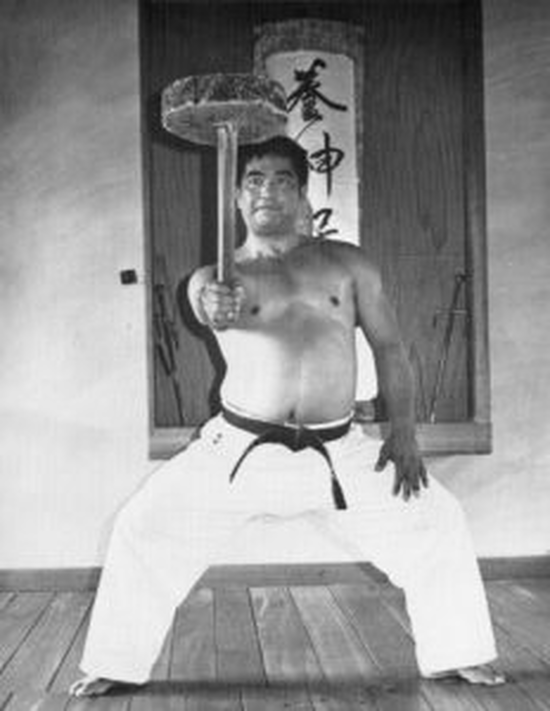
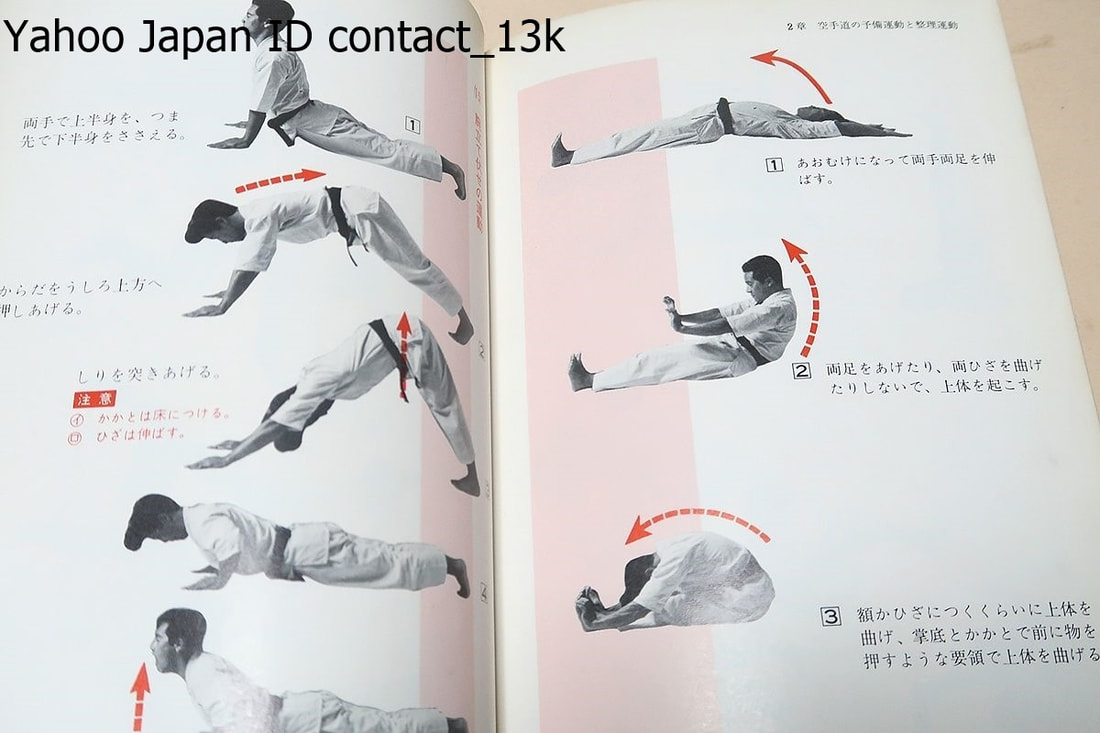
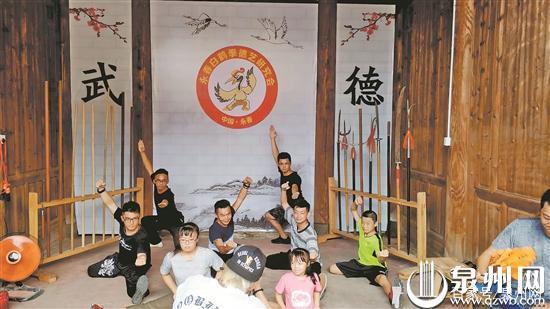
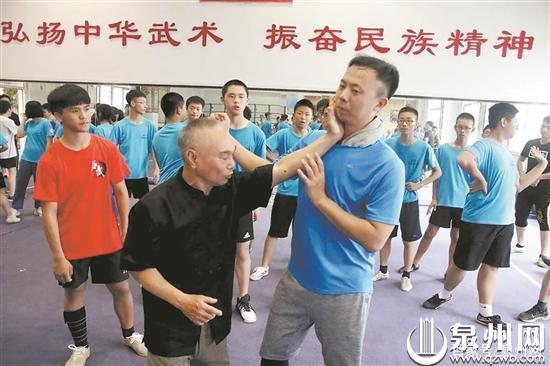
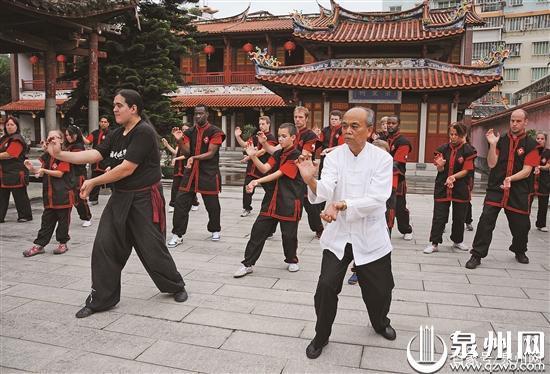
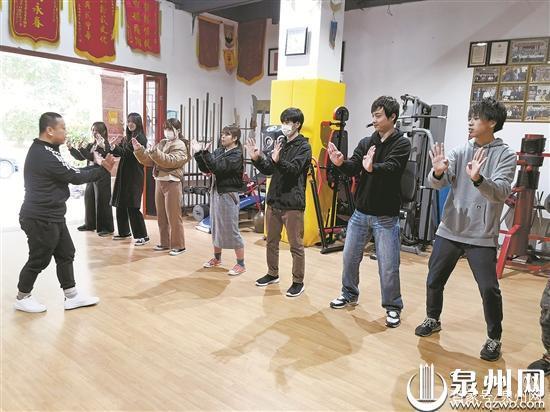
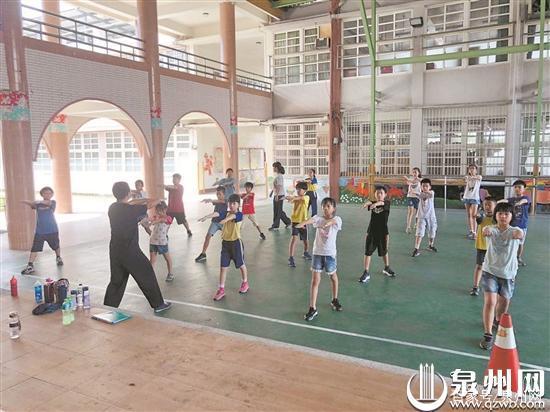
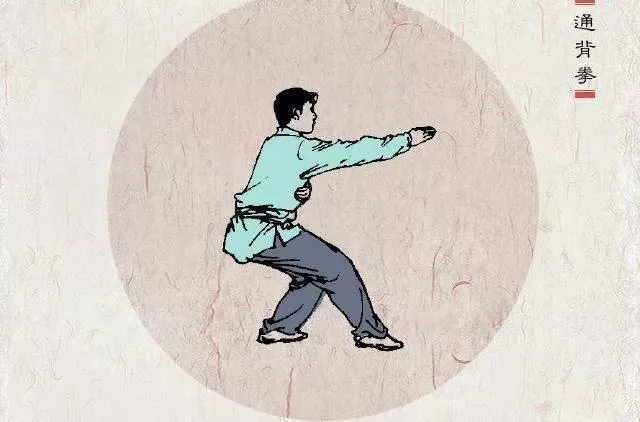
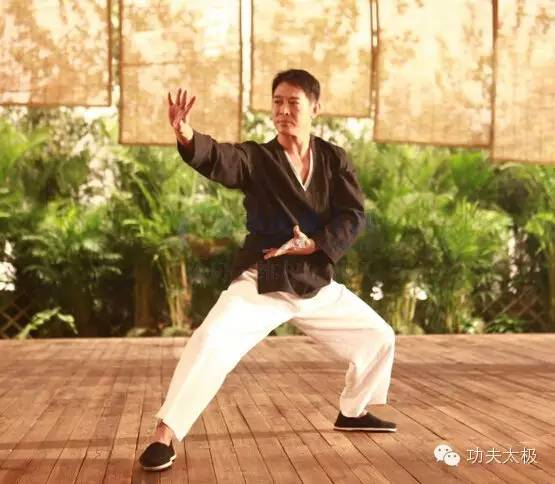
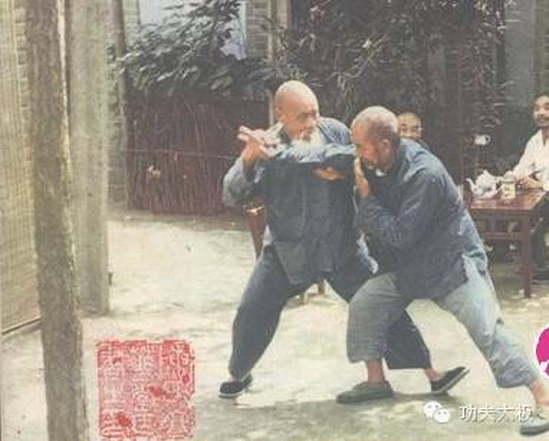
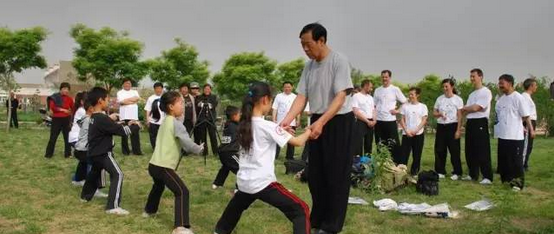
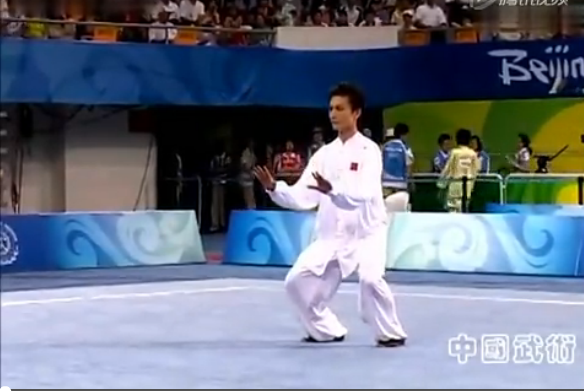
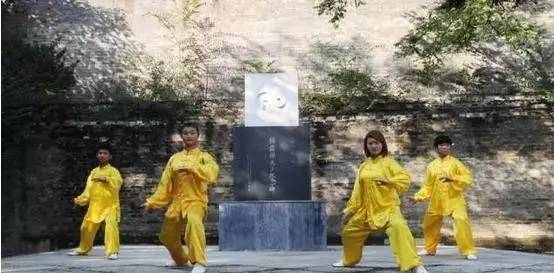
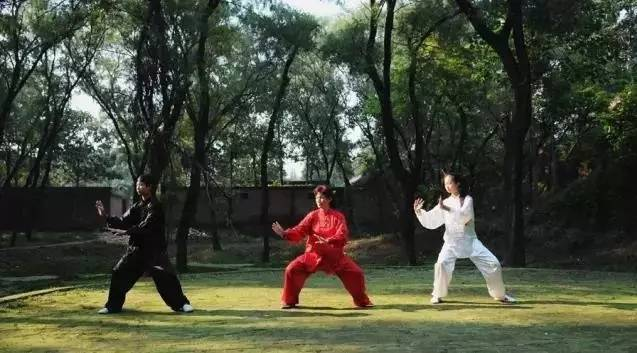
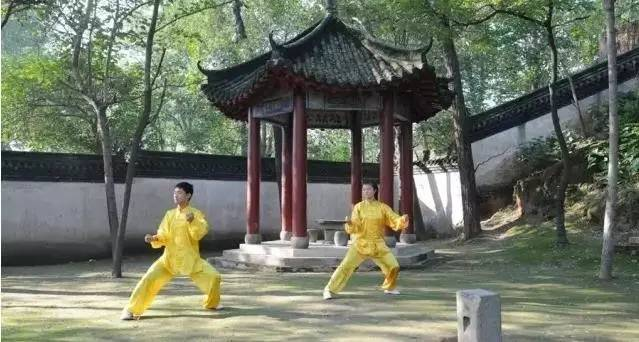
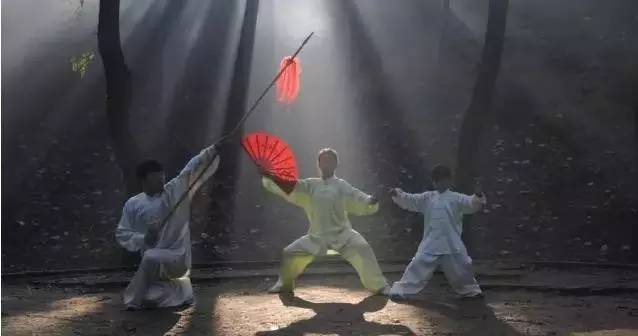
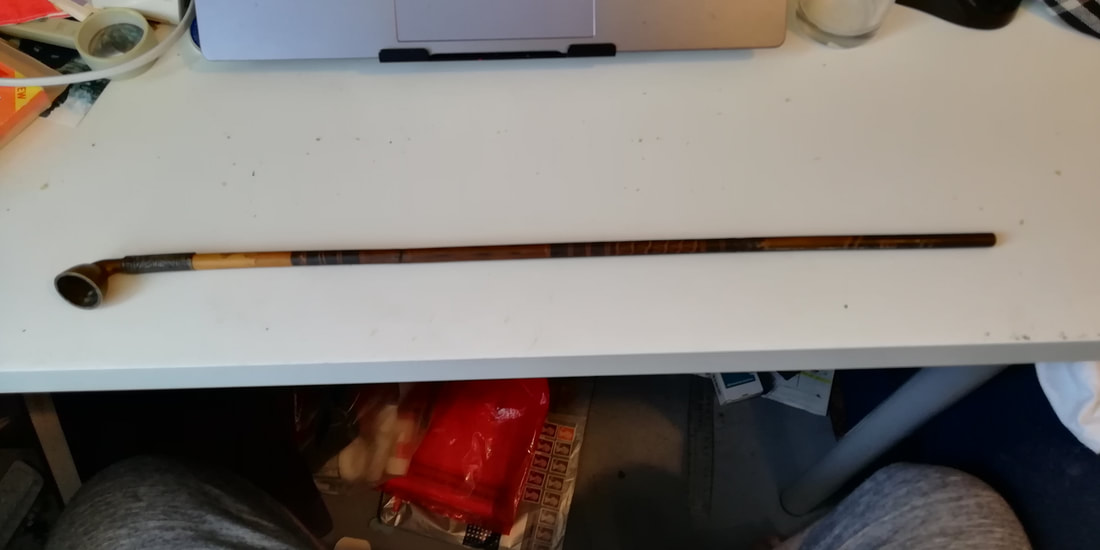
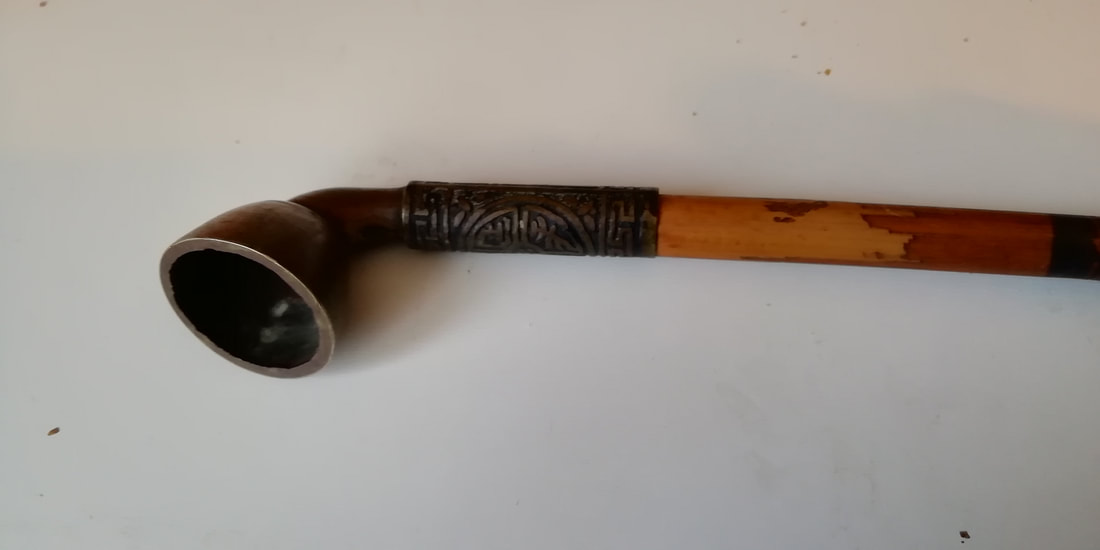
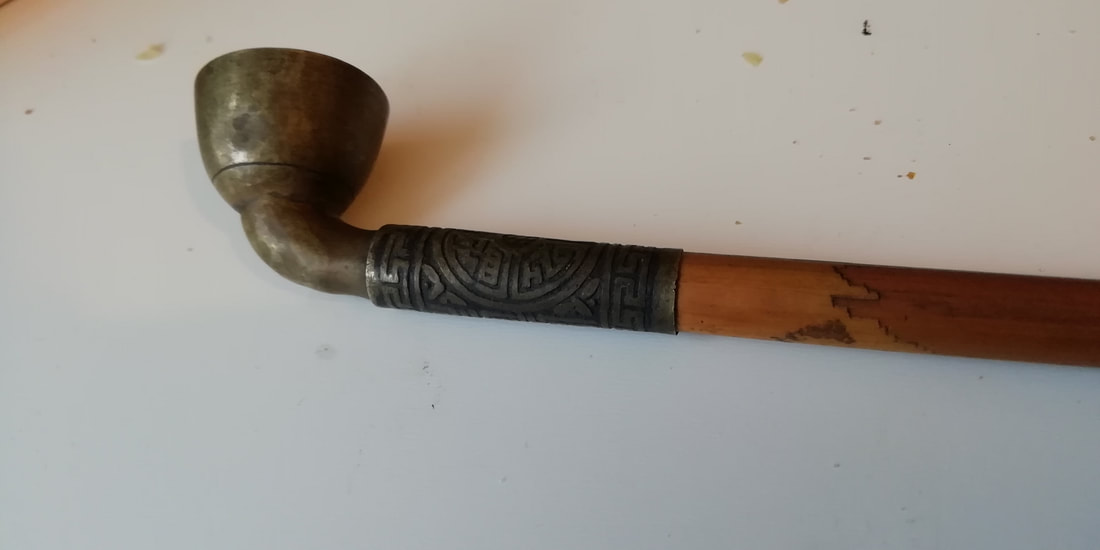


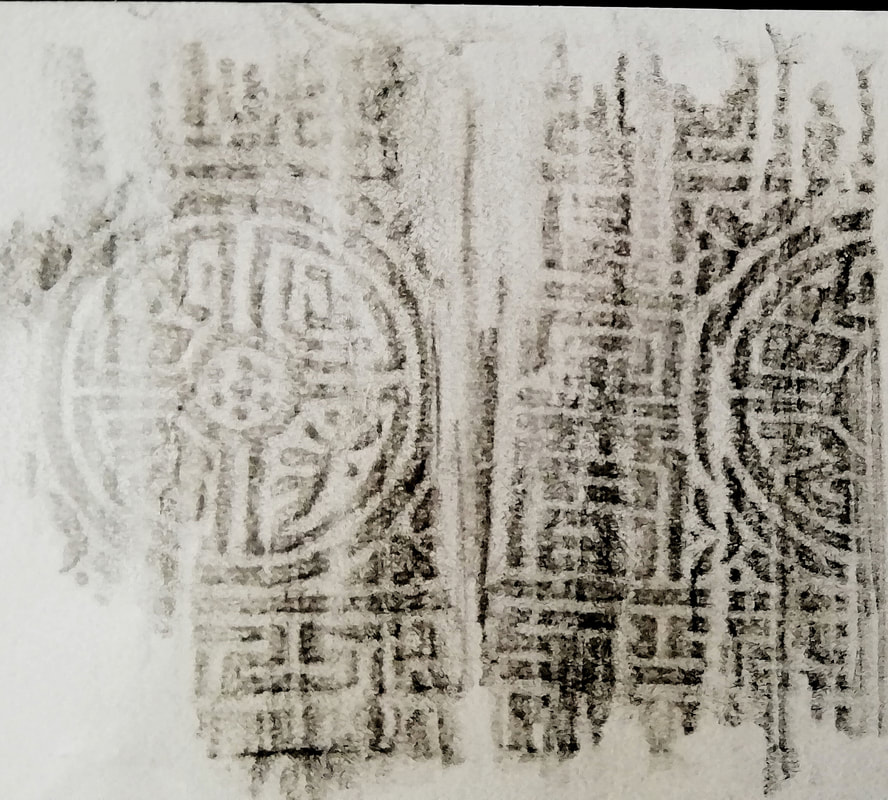
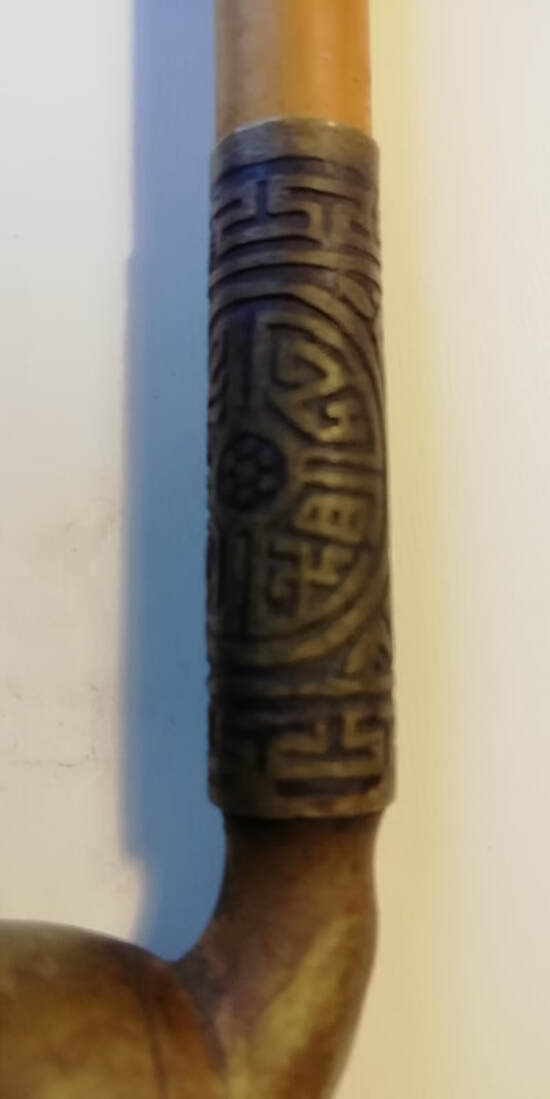
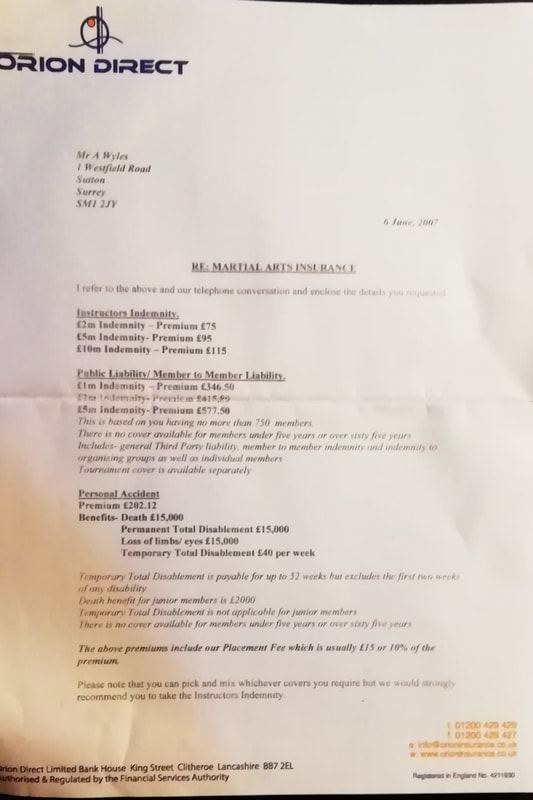

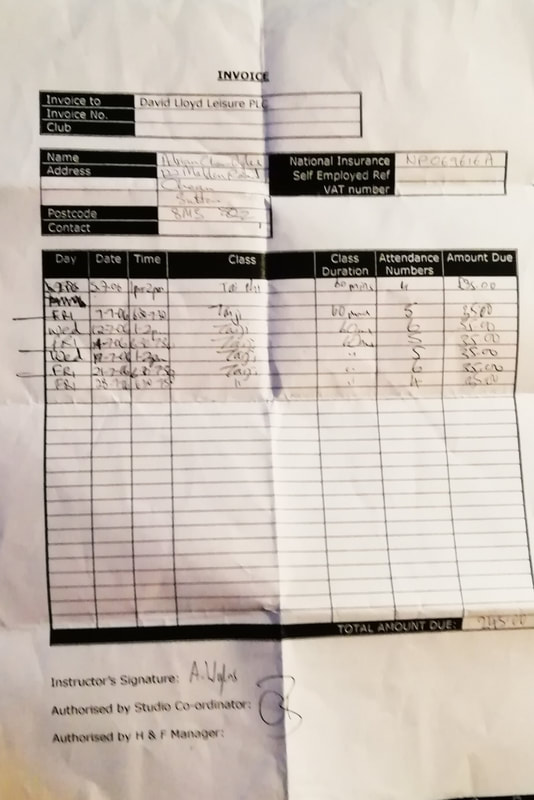

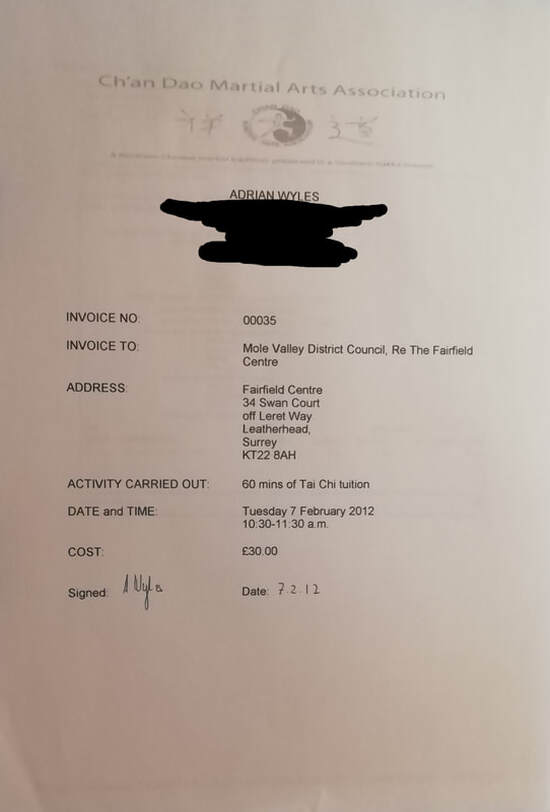

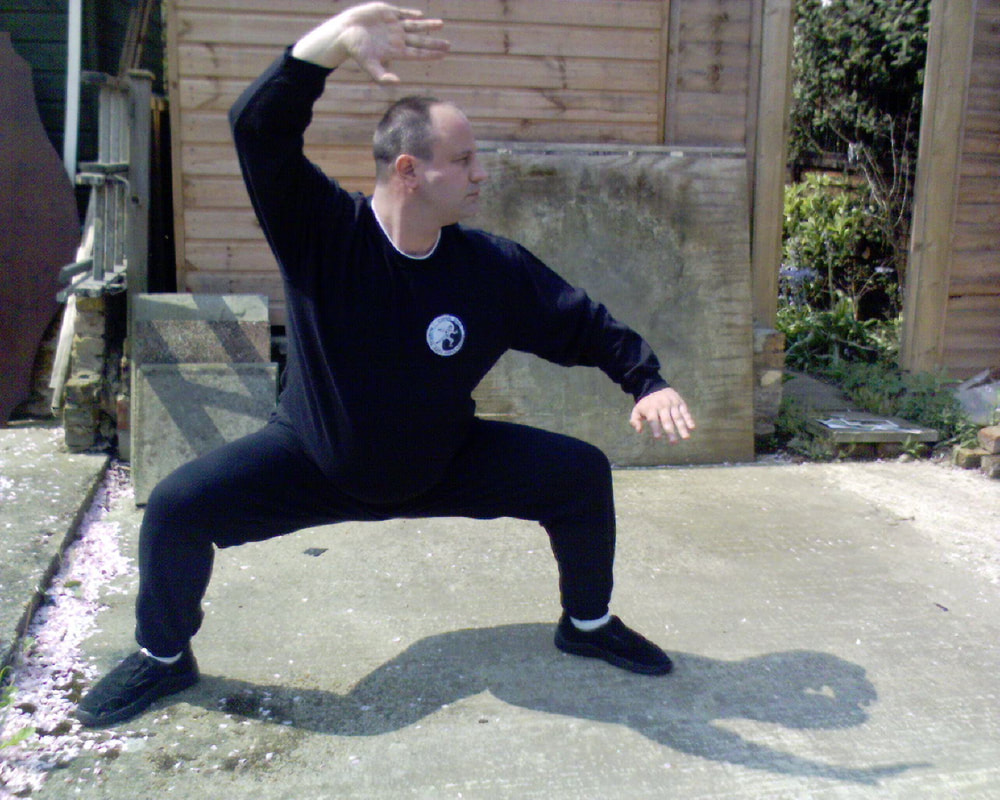
 RSS Feed
RSS Feed